WEDNESDAY'S SCRIPT TIP:
SHOW THE GOAL

Characters have needs, desires, and goals... or else they are aimless. Without
a goal of some sort, there can be no conflict... and no story. Your protagonist's goal is one of
the most important things to show in your script... and that means some goals won't work well on
film. How do you show world peace? How can you show happiness? A goal has to be tangible in order
to work on film. We have to be able to see it. The camera must be able to focus on the goal. If a
character is striving for inner peace, how can we ever show that he's found it? If we show him
smiling all of the time, the audience might think that he's lost his mind. If we have him say
"I've found inner peace!" they'll KNOW he's lost his mind... who says things like that? In film,
seeing is believing. A goal we can't see doesn't exist. If you don't show it, the audience can't
know it.
In Diane Thomas' ROMANCING THE STONE, Michael Douglas dreams of buying a yacht and sailing around
the world. That's a great dream... but how do we SHOW that? How do we turn a dream into a tangible
goal? Something we can see? Douglas has a framed picture of his dream boat that he keeps in his
Jeep. When the Jeep is wrecked, crashes and is upside down, everything he owns is lost or
destroyed, the ONE THING he rescues is the photo. He puts it in his shirt pocket next to his heart.
No matter how much hell he goes through in the film, he always holds on to that photo of the yacht.
His goal is always there. We know exactly what his goal looks like... so that when we see that
yacht at the end of the movie seeming to cruise down a street in Manhattan, we know EXACTLY what
it is. No need for exposition or explanation. That's a great visual moment, set up with a
photograph - a goal we can see.
Kathleen Turner's character is the protagonist, her goal is to rescue her kidnaped sister. We
can see the sister (played by the director's then wife Mary Ellen Trainor) and we can see the kidnapers who have
her hostage (played by Danny DeVito and the great Zack Norman). The sister is a tangible goal, and
the kidnapers are a tangible conflict that comes in the way of achieving that goal.
What do the kidnapers want? A map to a treasure, El Corazon. The map was sent to Turner's character,
and the kidnapers want a trade - map for sister. The map, which is the villain's goal, is also
something physical and tangible that you can hold in your hands or focus a camera on. A goal we
can see. And the map leads to a treasure that is also tangible. Every goal in the film is something
we can see. By the time we get to the exchange at the end - sister for the map - that is also
something we can see. All of the goals in ROMANCING THE STONE are physical and visual and tangible.
Films need to be driven by PHYSICAL goals, not internal or emotional goals. Any goal that can not
be seen must be turned into a goal that can be seen. If you don't show it, the audience can't know
it.
SLUMMING FOR GOALS

Simon Beaufoy's SLUMDOG MILLIONAIRE is about a poor orphan kid from the streets and slums of
India who ends up on the Indian WHO WANTS TO BE A MILLIONAIRE at 19... and answers every question
correctly! So, of course he is arrested by the police for fraud, since they are sure that he
cheated. How could a guy with this background know all of the answers? The police interrogate him -
and they are not afraid to hit him and worse to get a confession - and ask him how he knew the
answer to each question... which leads to a flashback... and the flashbacks tell the story of the
boy, from childhood until now. This is a great CITIZEN KANE like device to give us the kid's story,
using the WHO WANTS TO BE A MILLIONAIRE show to drive the story.
The film ends up in 3 time periods - the Game Show, the Police Station, and the Boy's Life.
Because we have these three time storylines, each of them is chronological to avoid confusion -
there's enough going on in the structure already. So we begin with the boy (Jamal) and his brother
at six or seven, then watch them grow up in flashbacks to thirteen or so, then as eighteen or
nineteen year olds. The game show drives the story, and this is a great device - just telling the
story of a kid growing up in the slums might be interesting, but the game show gives it a concept
that is interesting and unusual. Not quite a high concept, but certainly something higher than
just the kid's story. This isn't just any slum kid, this one just won WHO WANTS TO BE A MILLIONAIRE.
His story is unique and special. The game show gives his story a reason to be told.
GOALS WE CAN SEE
But movies need goals that we can see. That way we know when a character has achieved their goal.
If a character is looking for self respect, we can't see that. We need a *physical goal* and that
visual goal needs to be what drives the story (so that we can see the character getting closer or
farther from the goal with each scene). Many movies that don't work use an internal goal to drive
the story and come off as being a collection of scenes without that driving force that moves the
story forward. The key to a story's through-line is a tangible goal. Here we have three elements
to the story, and sort of three goals (though they all come together by the end).
GAME SHOW:

Easy to figure out what the goal is in the Game Show, to win the money. We have a poor slum kid,
now 19 working as a servant in an office getting tea for the employees and doing anything else they
need him to do - and if he wins this game, he will be rich.
Part of the game show format is they give the contestant a big fake check before the next
question and ask if they want to quit now or risk that money to keep playing. That big fake check
is the visual symbol of the money for both the show and the movie. So when he hands the check back
to the host to continue playing, we *see* him risking the money. The money has been made tangible
and physical with that big fake check. We always need to find a way to make something unseen and/or
abstract into something concrete for the film.
POLICE INTERROGATION:
And it's easy to figure out what the goal is in the Police Station, to be released. Though the
police station itself is a visual way to show confinement, our kid is handcuffed. The handcuffs
create a physical goal - having them unlocked and removed is something that we can see. You always
need a visual goal, and the more concrete the goal is, the better the goal. We need to be able to
see the goal and know precisely when it has been achieved. Often this means creating a symbol -
something physical like the handcuffs that represent the goal.
BOY'S LIFE:

But for the kid's story, what is the goal going to be? What is that drives that story? What can
the goal be when we go from 6-7 years old all of the way up until he gets on the game show? And
what does the game show have to do with that goal? Obviously, going on the game show needs to be
motivated... by the goal. When the kid is 7 years old, he can't be thinking, "If I could only get
on WHO WANTS TO BE A MILLIONAIRE., I can change my whole life!" Kids don't think like that, and
I'm not even sure the show was on when he was a kid, and... well, where would a kid in the slums
where there is not electricity watch TV? So we need something that is part of his slum life, that
can also be a constant motivation throughout the rest of his life... which brings us to that third
Musketeer - the girl from the slums that Jamal invites in out of the rain... and falls in love with,
Latika. Throughout the flashbacks which make up most of the film, the three children have a variety
of adventures... and often are split up by circumstances. So Jamal is often looking for the girl
he loves - he will find her and then lose her several times in the course of the story.
The girl herself is the goal, here - she is the physical symbol of his love. Had they been
together throughout the movie, Latika could not be the symbol of lost love - because she wouldn't
be lost. If you have the goal, the film is over. So Jamal must lose the girl for her to be the goal.
This girl is the through-line for the movie. The over-all goal. Which is great, because it makes
the movie *not* about becoming a millionaire, but about finding love.
SLIGHT SPOILER:
It's a love story. Though SLUMDOG seems to have three goals, by the end we realize it has only really had one goal
- the girl he loves. He has lost her, can not find her anywhere, and knows that she always watches
the MILLIONAIRE show. So what better way to find her than to become a contestant? She will see him
on the show, and he can use the show to speak directly to her. Profess his love. This may seem
like a completely unlikely scenario, but earlier in the film Jamal has learned how to be the first
caller in order to become a show contestant for a co-worker. All of his co-workers are obsessed
with the show and have a dream to get on the show, win the big prize and quit their job... but
turning the dream into a goal requires a step-by-step plan. Jamal is clever enough to figure out
exactly when you must begin dialing the phone in order to become the first caller. This is a great
little plant that pays off in an off screen scene revealed at the end of the film when we discover
that his love for Latika is the over-all goal for all three time periods in the film... which
makes perfect sense, because in the section that is Jamal's life story she is the goal... and
his life story comes to include the Game Show and the Police Station.
Instead of a scatter-shot plot with many goals driving the story, we end up with one goal -
Latika. How do we know that Jamal reaches his goal? Well, by being on the MILLIONAIRE show, she did
see him and comes for him. When they embrace, the goal has been realized - we can see that he has
achieved the goal, because she is right there in his arms. If she had just phoned him, that would
not have *shown* him achieving the goal. We need something we can see - an action that shows us
that the goal has been achieved. If we don't show it, the audience can't know it.
Can you SEE your protagonist's goal? Is it something tangible? If we can't see it, how can we
know when he's achieved it? Are all of the small goals along the way made tangible? Is the
conflict that comes between the protagonist and their goal tangible? Do you SHOW the protagonist
achieving their goal (or show them *not* achieving it in a tragedy)? Have goals and obstacles
been made concrete and physical?
MY BLOG!
 SCRIPT SECRETS STORE
SCRIPT SECRETS STORE
Start The Day The Coffee Way!
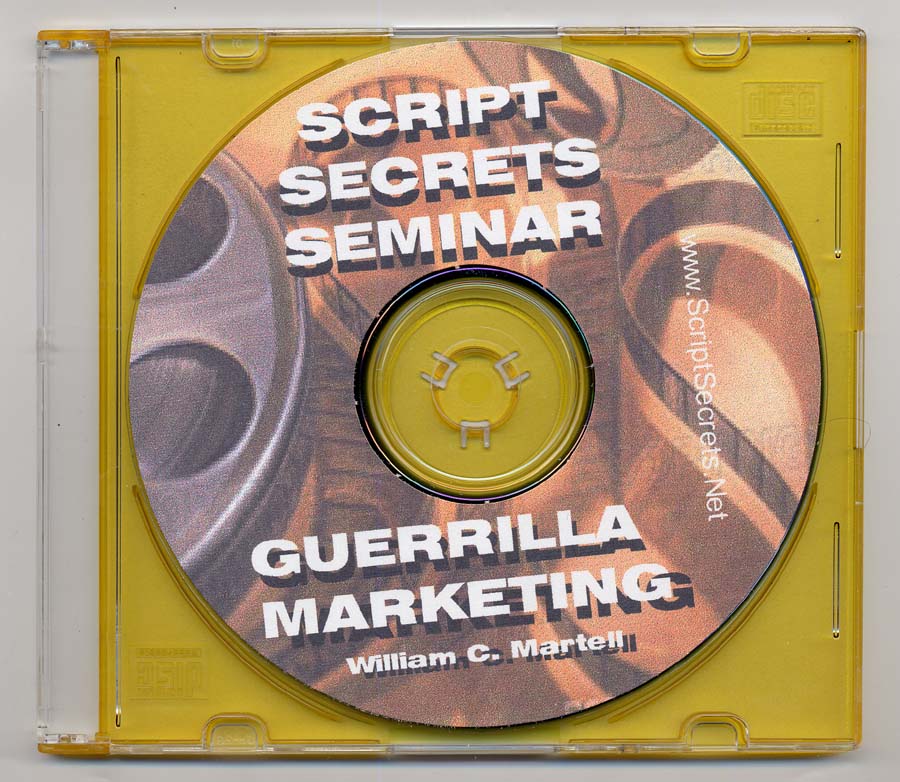
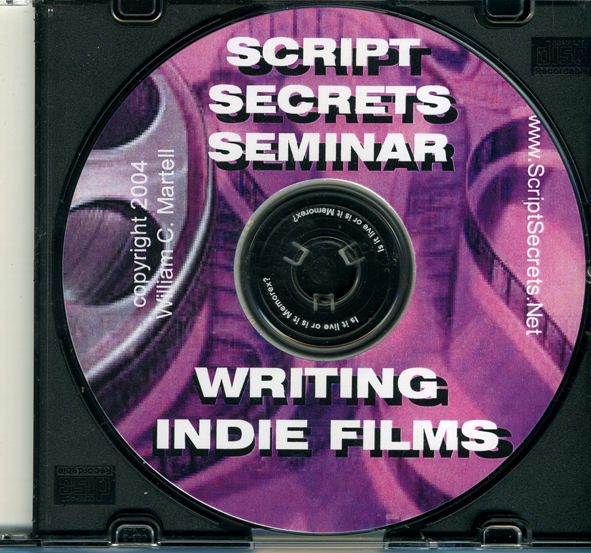

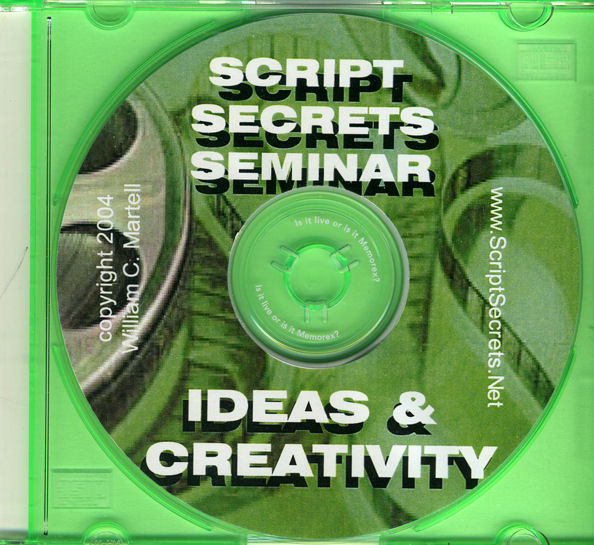

*ALL* CLASSIC CLASS CDs
ALL SIX CLASSIC CLASSES! Why break up a set? Get all of the Classic Classes on CD for one low price - and save on postage, too! SIX CDs packed with information! From IDEAS & CREATIVITY to WRITING INDIES to WRITING HORROR to the 2 part WRITING THRILLERS to GUERRILLA MARKETING. These classes used to sell for $15 - for a total of $120 with postage & handling. Buy the whole set and get 'em for only $70 including postage and handling (USA).
It's the big deal - You SAVE $50!!!!
NEW CLASSES!
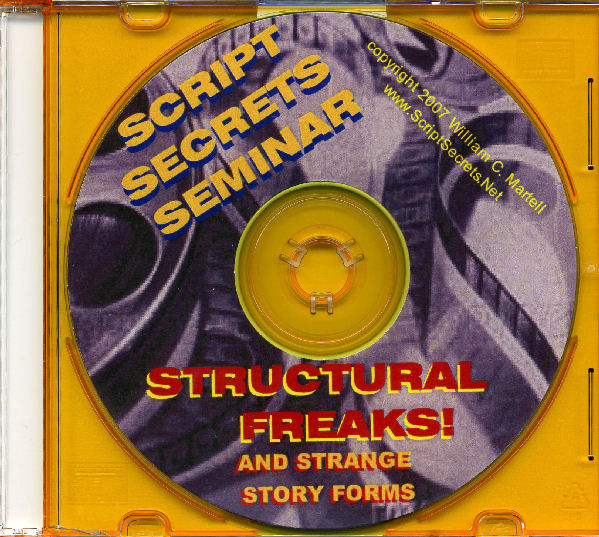
STRUCTURAL FREAKS! - 80 minute CD packed with information! Ready for the freak show?
William Goldman says "Structure is everything". Do you understand structure? Is your script running out of steam halfway through? Exploring different methods of structuring your screenplay - alternatives to the three act structure like the Navajo Story Circle, Tag Teams, Strange Chronologies, and more. Using examples like INGLORIOUS BASTERDS, RUN, LOLA, RUN and PULP FICTION and THE HANGOVER and TIMECRIMES and CRASH and SLACKERS and other odd storytelling methods. The Structural Freaks Class sells for $15 (plus $5 S&H)
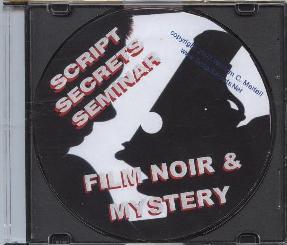
NOIR & MYSTERY - 80 minute CD packed with information on writing Film Noir and Mystery scripts. Using examples from CHINATOWN to OUT OF THE PAST to DOUBLE INDEMNITY you'll learn how to create stories in this dark, twisted genre. How to plant clues, red herrings, suspects, victims, spider women, fallen heroes, the funhouse mirror world of noir supporting characters... and the origins of Film Noir in literature Noir dialogue and how noir endings are different than any other genre. All of the critical elements necessary to write in this critically popular genre. The Noir & Mystery Class is only $15 (plus $5 S&H). First 20 on Limited Black Disk!
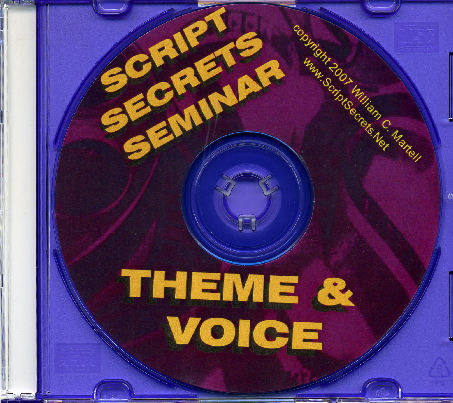
THEME & VOICE - Theme is the center of your story - the reason for telling your story. How to find theme with your character and use theme to explore your character. Why theme is the most important element in any screenplay. Theme and nexus. Theme and dialogue. Theme and scenes. Your personal themes and finding your unique voice as a screenwriter. This 80 minute CD is packed with information - THEME & VOICE sells for $15 (plus $5 S&H)
Click here for more information on CLASS CDs!


Imagine having the phone numbers for every single producer in Hollywood at your finger tips! From the producers of big studio films to companies that make edgy indie films. Phone numbers, addresses, contact names, what sort of material they are looking for, what films they have made in the past, what genres interest them. Oh, and what studios and distributors they have deals with. Star based production companies, too! This is the 2008 edition - completely up to date. If you want to get your screenplays into the hands of producers, you need this book!
* * * Buy It!
|

